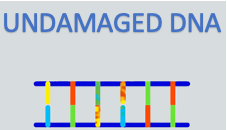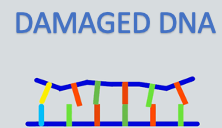N13-9-1 mechanism of action:
Selective induction of apoptosis in tumor cells.


Novel mechanism of action: selective induction of apoptosis in tumor cells
In cancer cells, treatment with N13-9-1 induces apoptosis pathways (programmed cell death), leading to cancer cell death. In vivo data in the patent show N13-9-1 induces apoptosis in pancreatic cancer, and in colon cancer, with no detected toxicity in animals. N13-9-1 does not trigger apoptosis in healthy cells and tissues of the animals.
Recent research by ourselves and other laboratories shows that N13-9-1 can use multiple signaling pathways to trigger apoptosis in various cancers: P53, JAK/STAT, AKT/p38/MAPK/ERK, and NF- ΚB. The availability of multiple pathways means that N13-9-1 can induce apoptosis in cancer cells with various genetic profiles.
N13-9-1 targets defective chemistry and structure of cancer cell DNA
Induction of apoptosis is commonly initiated when a drug binds directly to DNA.
N13-9-1 follows this model with a ground-breaking distinction:
N13-9-1 kills tumor cells, but is not toxic to healthy cells, which means that it binds selectively to the DNA in cancer cells and only induces apoptosis in cancer cells.
Our scientists hypothesize that N13-9-1 specifically targets the damaged DNA in cancer cells, leading to programmed cell death. We are planning further studies to verify this hypothesis.

The DNA in cancer cells is chemically and structurally damaged

Healthy DNA
Structure Intact

Oxidative Reactions
Cause DNA Damage

Cancer DNA
Nucleotides are Modified
Backbone is Bent
Chemical-structural damage caused by oxidative stress is an established characteristic of cancer cell DNA, but it has not been the focus of anti-cancer drug targeting until now. Cancer DNA exhibits much more oxidative damage than healthy DNA including stretched or broken chemical bonds and substituted or deleted atoms. This chemical damage can bend the backbones of the cancer DNA strands, destabilizing the structure of the duplex.
Extensive oxidative damage of cancer DNA can also induce marked conformational changes at the replication fork where the DNA synthesis reaction takes place.
The defective structures in cancer cell DNA provide the selective targets for N13-9-1 binding that leads to apoptosis.
